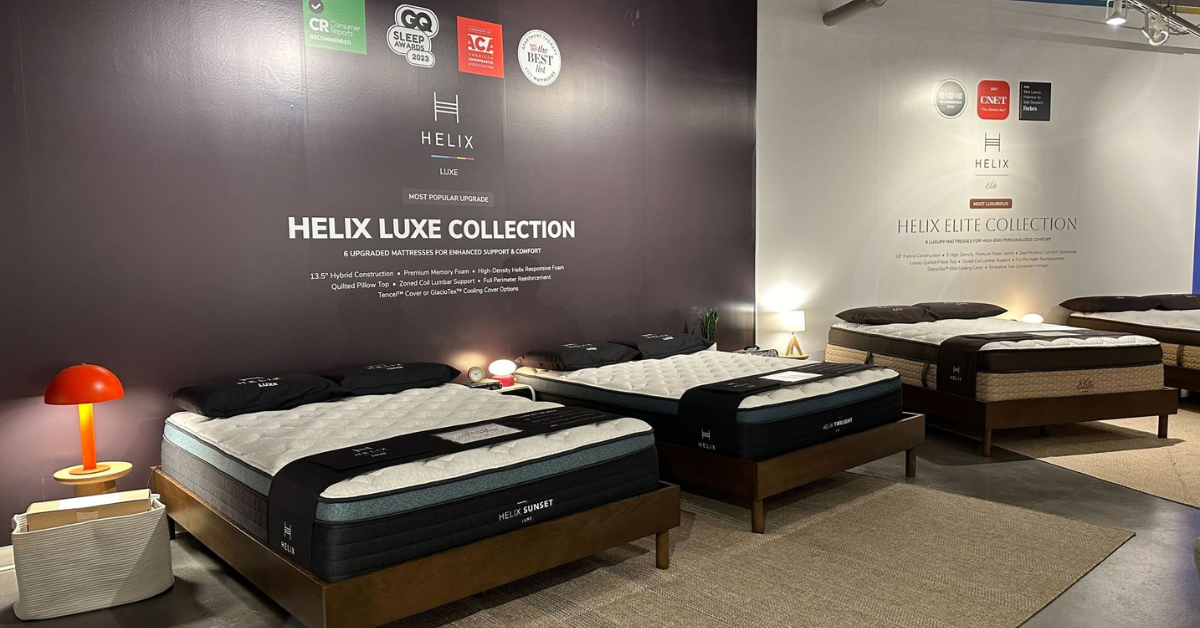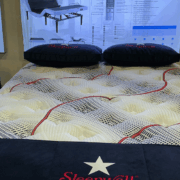Although Helix Sleep was founded as a direct-to-consumer mattress brand, the company has recently expanded its reach by partnering with brick-and-mortar retailers.
In June, Helix Sleep announced two new retail partnerships, one with Sleep City and Sweet Dreams Furniture & Mattress, which in total, will expand Helix’s retail footprint by 12 locations across key regional markets.
The bedding brand, part of 3Z Brands, then went on to sign on Living Spaces, bringing Helix to 36 Living Spaces locations nationwide.
And on Aug. 19 (one day after the original publication of this article), the company announced a new partnership with top retailer Rooms To Go. With 200 RTG locations, this strategic collaboration marks a significant milestone for Helix.
We caught up with Jerry Lin, co-founder of Helix, to learn more about why the partnerships are succeeding.
“Retailers are seeing results as our marketing is driving traffic to their stores,” Lin tells Bedding News Now. “We have accelerated brand awareness, and we have what retailers need: qualified leads, margins and traffic-drivers.”
Lin says 3Z Brands spends $100 million a year on marketing across different channels, from podcasts to Facebook to influencers. He also says 7 million people are driven to the brand through marketing each year, but only 2% convert online because they want to touch and feel the product in-store.
“Because 98% don’t convert, we needed to become an omnichannel business and meet customers where they are,” he explains. “We are currently finding the right retailers to re-target traffic and test our products.”
In 2021, 3Z Brands combined Helix and Brooklyn Bedding, another of its brands. That, according to Lin, is what gave Helix the margin to be able to get into physical retail stores.
“We provided buttoned-up proposals for our prospective retailers and all of them have said yes,” he says. “We started the program in 2023, and this year we’re on track to more than double our wholesale business compared to 2024.”
Lin explains that the success of the program is due in part to Helix picking the right retail partners from the get-go. “We promised margins and traffic, and we delivered,” he says. “The trust our retailers have in us has gotten out in the marketplace. We’re growing double digits this year and taking market share because our brand resonates strongly. We own the first impression with online shoppers.”
The company aims to help retailers compete with aesthetic changes as well as changes to the internal parts of the mattresses, like dark covers and up to 7-pound memory foams. It has also invested heavily in point-of-purchase displays like branded walls, headboards and other features that resonate at retail.
“E-commerce saw growth during Covid but the reality is that people still want to touch and feel a mattress before buying it,” Lin says. “It’s an omnichannel world and you have to be there, online or off. And retailers need to have a strategy that fits into that journey.”




